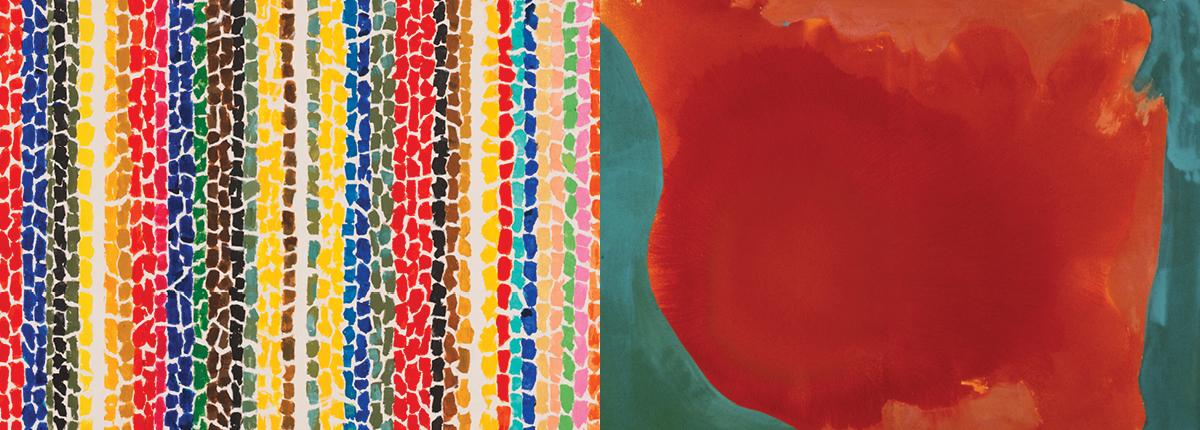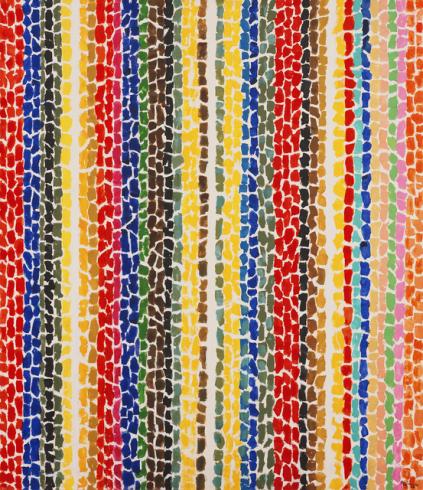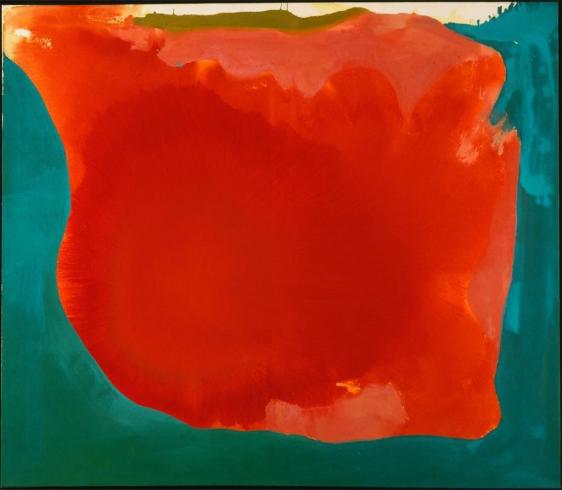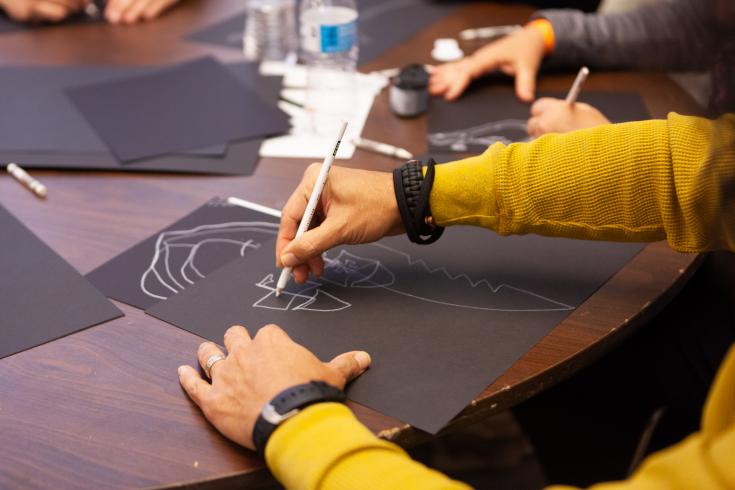A Sense of Place

Part 1: Noticing Our Feelings
How Do You Feel?
- Explain to students how when they go to different places, they may experience different feelings. Have them think about how they feel…
- In their home?
- In a park?
- At their school?
- At the gym?
- In an art museum?
- In a church?
Imagine:
- Prompt students to close their eyes and imagine their favorite place. Ask:
- How do you feel in that place?
- What colors would you use to describe it?
Part 2: Discussion and Making Connections
Discuss:
- Both of these works by Helen Frankenthaler and Alma Thomas evoke a sense of a place. Guide students through these prompts to have them IDENTIFY how these artists capture a sense and feeling of a place.
- Write a few adjectives to describe the place Frankenthaler paints.
- Then, consider the artwork’s title, Canyon. After learning the title, how does that alter how you view the painting?
- What has she done with color and composition (the arrangement of all of the parts of the painting) to capture the monumentality of a canyon?
- Write down some adjectives to describe Thomas’s work.
- Then, think about the artwork’s title, Breeze Rustling Through Fall Flowers. After learning the title, how does that alter how you view the painting?
- What has she done to capture the essence of a breeze rustling flowers?
- Write a few adjectives to describe the place Frankenthaler paints.
- Have students connect the two paintings by thinking about how the following are similar and different:
- The words they used to describe the two paintings
- How each artist evokes a sense of place
- Each artist’s use of color
- The mood of each painting
Part 3: A Change in Perspective
Both artists use color and abstraction to capture the sense of a place. Let’s try a similar approach to EXPRESS our own sense of place:
- Select an object from nature. It can be a flower, leaf, or anything that you can easily find outside.
- Place the object on the table. On a piece of paper do three continuous line drawings, each from a different angle. Think about seeing it from above, from the side, and from an unusual angle.
- A continuous line drawing is produced without lifting the pen or pencil from the paper.
- Focus on the object, not on your drawing. Pay attention to the contours and details of the object.
- Set a timer (e.g., 30 seconds) for each drawing.
- Try to make your drawing more abstract. Consider trying one of these approaches:
- Focus in on one section of the drawing and enlarge and/or crop it
- Color your drawing with non-representational colors
- Combine all 3 drawings
- Imagine how your drawing/object might look from really far away, up close, or through a kaleidoscope
Additional Extended Activity: Know Your City (Grades 5-7)
As an art teacher, Alma Thomas developed a lesson called “Know Your City.” She took her class to different locations around Washington, DC, talking about what was happening there and how the students felt in those spaces. Then she sent them out on their own to other locations and had them report back to the class.
- Have students think about how they feel in some of the locations discussed in Part 1.
- Option 1: Have students research a local place that has personal significance to them.
- Option 2: Connect each work of art to a major historical event happening at the same time or to a contemporary piece of literature or music.
Additional Context
Lesson Context
Helen Frankenthaler, Canyon, 1965
- In the spring of 1951, Frankenthaler was inspired by a visit to Jackson Pollock’s studio. She began diluting and thinning her oil paints to the fine consistency of watercolors, which she applied to unprimed canvases that she laid on the floor. The thin paints soaked through the canvases in broadly spreading stains.
- In the 1960s, Frankenthaler began to modify her technique by using acrylic paint to create more saturated colors and more solidly defined shapes. She also started using cropping as a compositional device.
- During a visit to Frankenthaler’s New York studio in April 1953, painters Morris Louis and Kenneth Noland (brought by art critic Clement Greenberg) saw her painting Mountains and Sea (1952). Louis observed, “[Frankenthaler] showed us a way to think about and use color … she was a bridge between [Jackson] Pollock and what was possible.”
- Although Canyon seems non-representational, it conveys her immediate response to nature. Her ideas are expressed in large color shapes and in the ways the colors interact with each other.
Alma Thomas, Breeze Rustling Through Fall Flowers, 1968
- Thomas taught fine art at Shaw Junior High School for 35 years starting in 1925. She began her career as a full-time painter upon her retirement, at the age of 70.
- Suffering from arthritis at the time of her retirement from teaching, she considered giving up painting. When Howard University offered to mount a retrospective of her work in 1966, she wanted to produce something new. Thomas explained, “I decided to try to paint something different from anything I’d ever done. Different from anything I’d ever seen. I thought to myself, ‘That must be accomplished.”’ From the window of her house, she enjoyed watching the ever-changing patterns that light created on her trees and flower gardens. With the holly tree outside her living room window as her initial inspiration, Thomas created a style that would become her signature: small, rectangular shapes of bright, intense colors merged together in curves, lines, and circles.
- Thomas described her subject matter: “I’ve never bothered painting the ugly things in life. People are struggling, having difficulty … No. I wanted something beautiful that you could sit down and look at.”
- Reflecting on her use of color, Thomas explained, “Through color, I have sought to concentrate on beauty and happiness, rather than on man’s inhumanity to man.”
Key Terms
Abstract art: A picture that does not represent any objects, but instead uses shapes, colors, lines, and forms to create the composition
Composition: The arrangement of all of the parts of the painting.
Continuous line drawing: A drawing in which you do not pick up the writing implement until the drawing is complete.
Contour: Outline of a shape or object.
Non-representational: The shapes do not accurately show identifiable objects.
Representational: The shapes show something we can identify.



